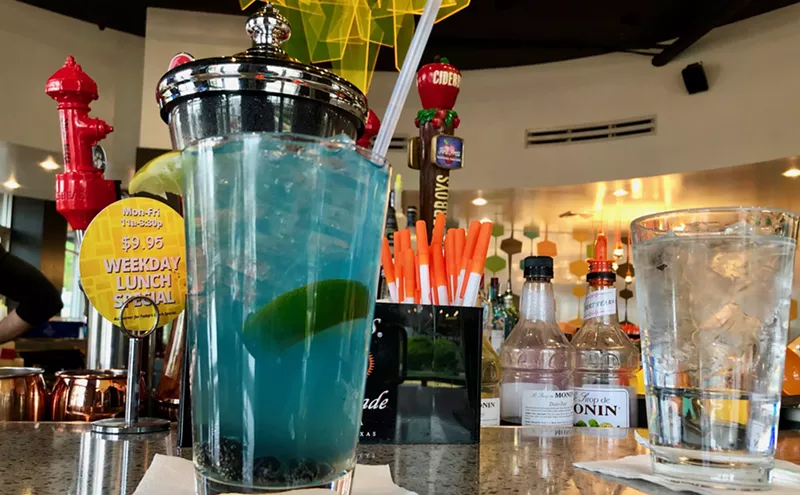When fresh, the huitlacoche is smooth and dry to the touch, with a slightly spongy texture --yep, like a mushroom. The texture of huitlacoche changes as it ages. When cooked, its color goes from whitish grey-black to a dark, rich black-brown.
The Aztecs and the Maya both cultivated huitlacoche. The name huitlacoche comes from the Aztec language Nahuatl, and translates as "ravens excrement." (Really? Bird crap? Is someone playing pictograph games?) It is also known in indigenous languages as maize mushroom and corn soot. The Hopi, Zuni and Cochiti tribes used the fungus in cooking, and the Hopi regard huitlacoche as a symbol of generation of life. The Aztecs believed huitacoche had mystical,even aphrodisiac powers. Both ancient and modern uses in cooking combine huitlacoche with complimentary seasonal vegetables like corn, squash, onions, peppers, and herbs.
Huitlacoche has other monikers. American farmers who have tried to eradicate it from corn crops call it corn smut and devils corn. In 1989, at a James Beard House dinner, Josefina Howard from Rosa Mexicano (NYC) restaurant featured huitlacoche on the menu, and the terms Mexican truffle and Mexican caviar became more widely used to promote huitlacoche in the culinary world.
Like other crops of the ancients, scientists are discovering the super food benefits of huitlacoche. In March, food scientists in Mexico and The University of Illinois reported in the journal, Food Chemistry, the metabolic change that occurs in corn kernels "infected" by the fungus. Huitlacoche is high in protein and lysine (an essential amino acid valued for muscle building and skin care), and has more soluble fiber than oatmeal.
There are a few growers of corn in America who have been at the forefront of cultivating huitlacoche, but until recently, the USDA spent millions of dollars helping farmers rid their corn crops of the fungus. Now that the nutritional news is out, that may change. Importantly to the grower, huitlacoche will bring them a higher profit than the corn itself. Hey Monsanto, how you gonna cash in on that? .
Huitlacoche appears on Valley restaurant menus and cookbooks featuring native foods of the Southwest. Azucena Tovar of Los Sombreros restaurant in Scottsdale says huitlacoche is black or white -- you either love it or hate it. Tovar calls her huitlacoche crepes super exotic; the crepes are filled with blue cheese and huitlacoche, topped with a pomegranate sauce and garnish of radish, onion, and pomegranate seeds. The flavors in the dish are complex, with a contrast of taste and texture. Tovar describes the huitlacoche as earthy.
Richard Vick, a server at Barrio Café, says huitlacoche is corn and mushroom flavors wrapped into one -- earthy and sweet combined. He notes that Barrio does not currently have a dish with huitlacoche; he first tasted it at the now-closed Mezcal.
Chef Sergio Mendez of Sierra Bonita Grill in Phoenix notes traditionally huitlacoche is served as a filling for quesadillas, sautéed with seasonal vegetables, smashed and served with cheese and epozote. He also likes to use it as an ingredient in making a filling for squash blossoms. A popular appetizer at Sierra Bonita are the mini quesadillas, corn tortillas filled with huitlacoche, manchego cheese and spinach.
Azucena Tovar and Sergio Mendez buy huitlacoche frozen from a source in Florida. Why not from Mexico? USDA and customs regulations prohibit it. Huitlacoche grown in the U.S. is reportedly milder in flavor than what is cultivated in Mexico.
You can find canned huitlacoche in markets that feature Latino food. Phoenix Ranch Market has the Goya brand, which sells for $4.49 for a 7 oz. can. The canned goods are packed in water, preserved with citric acid and salt. Very mushy in appearance, a Ranch Market shopper and self-proclaimed "great cook" told us it doesn't compare to fresh huitlacoche.
Huitlacoche can be purchased frozen on-line. Azucena Tovar will make it available to customers from her frozen supply, a 2 lb minimum. Prices hover around $25.00 per lb for huitlacoche. You can keep it frozen, defrosting what you need overnight in the refrigerator. Once defrosted, it will keep for about one week in the refrigerator.
Check back tomorrow for Azucena Tovar's Huitlacoche Crepe recipe.












